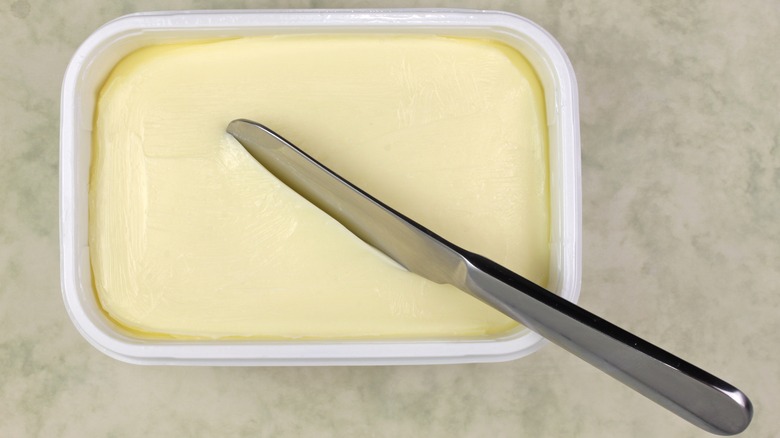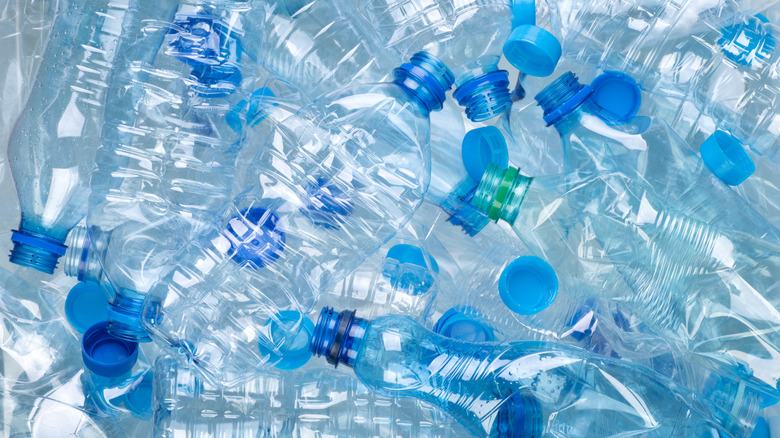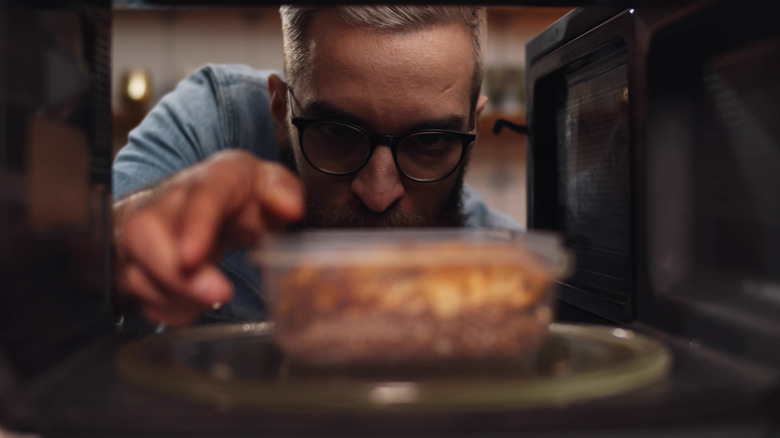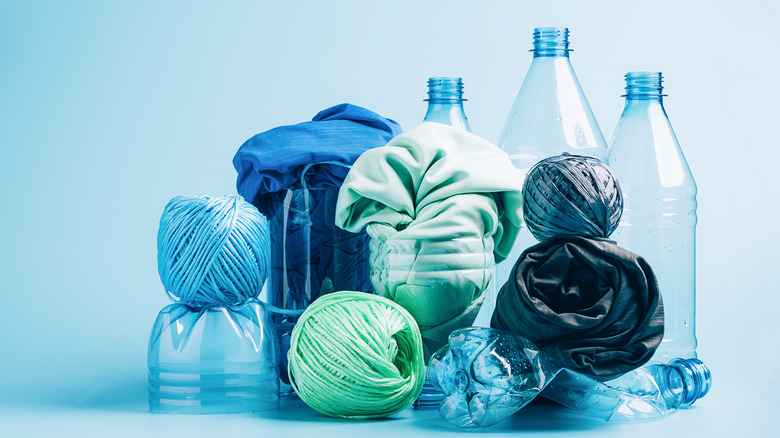Why It's A Bad Idea To Reuse Margarine Tubs
Many of us have a cabinet packed full of old plastic food containers, Tupperware, a random mix of lids, and bowls waiting to hold those treasured leftovers. It's easy to pack a half portion of spaghetti into an empty margarine tub and toss it into the fridge. Doing this reserves your plastic zipper bags for packed lunches and saves money, right?
It's not until the time comes to reheat your pasta that the debate may occur. Should you leave the food in the container while reheating it in the microwave, or should you empty the contents onto a plate first? This question is legitimate and that should be delicately pondered.
If you've made a habit of saving empty margarine tubs for storing leftovers or other bites, you'll want to learn why it is a bad idea to reuse them for storing and reheating food.
What's the big deal?
According to Allrecipes, plastic containers made to hold margarine aren't necessarily designed to store food after the tub is empty. They suggest storing and heating foods in glass containers or on a microwaveable plate.
Why all the fuss about plastic containers? Polycarbonate plastic is used to make various products ranging from water bottles to epoxy resins to plastic pipes. According to the National Institute of Environmental Health Sciences (NIEHS), microwaving plastics may break down polycarbonate, releasing a chemical known as Bisphenol A (BPA).
The NIEHS claims that most human exposure to BPA comes from food and beverages. In fact, the CDC conducted a study between 2003 and 2004 to determine how much BPA could be measured in test subjects' urine. They found levels of BPA in nearly every person tested, which means that BPA exposure is widespread in the U.S. population.
How does BPA affect human health? The CDC says it's still unknown at this time. However, studies conducted on lab animals indicate an impact on the reproductive system is possible. They claim that additional research is needed to determine the effects of BPA on humans. However, the National Library of Medicine suggests that BPA plays a role in endocrine, hormone, and metabolic disorders.
Are plastics safe to use in the microwave?
All plastics used in food packaging and those that make contact with food are regulated by the U.S. Food and Drug Administration. If you investigate your margarine tub, you'll find a code located on the container.
According to the U.S. Environmental Protection Agency, this number is called a Resin Identification Code; it determines which type of plastic is used to create that container.
Plastics labeled #3, #6 (Polystyrene), and #7 aren't safe to be reused or microwaved, though they are safe for initially holding foods like butter, says Allrecipes.
In case you're wondering, this includes most takeout containers, too, Taste of Home confirms. The National Research Council says that styrene is "reasonably anticipated to be a human carcinogen," per the Cancer Council.
Allrecipes suggests recycling the container when the margarine is gone, and the NIEHS agrees. It notes that some plastics numbered with codes #3 or #7 may contain BPA. They advise not to microwave polycarbonate plastics because they can break down over time when exposed to high temperatures.
In addition, plastics labeled #1 are made of Polyethylene Terephthalate (PET) and should be recycled, not reused, shares Eartheasy.
Which plastics are safest? Taste of Home explains that plastics containing resin codes #2, #4, and #5 are the safest to use for storing food.
When in doubt, throw it out
If you aren't sure which plastics are safe, it's best not to use them for storing or reheating food at all. Kitchn clarifies that overused, scratched containers labeled as safe for use in the microwave may actually be unsafe due to their used condition.
As discussed earlier, use glass containers for storing and microwaving food when possible, never heat styrofoam, and recycle when applicable.
Recyclebank has a few handy tips on how to repurpose plastic containers if you just can't bear the thought of tossing them. Tubs that are coded as reusable can be used to create self-watering planters or to grow seedlings. Plastic containers can also be reused for storing leftover paint, Reader's Digest Canada suggests.
Now that you know the basics of resin codes and BPA, you can be more mindful of the plastics in your home. The most important thing to remember is: If you're in doubt about a plastic container's safety, throw it out — or recycle it.



